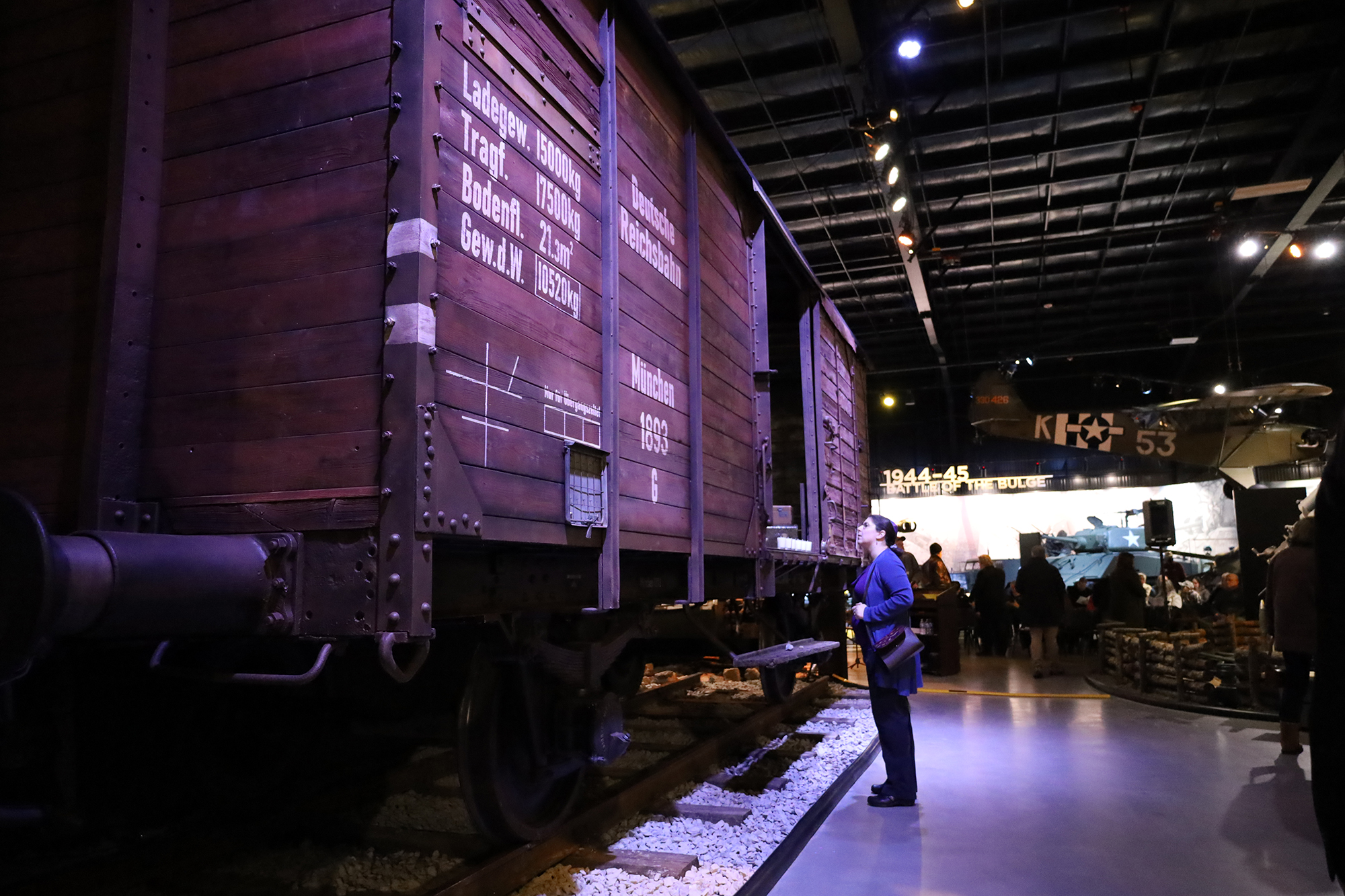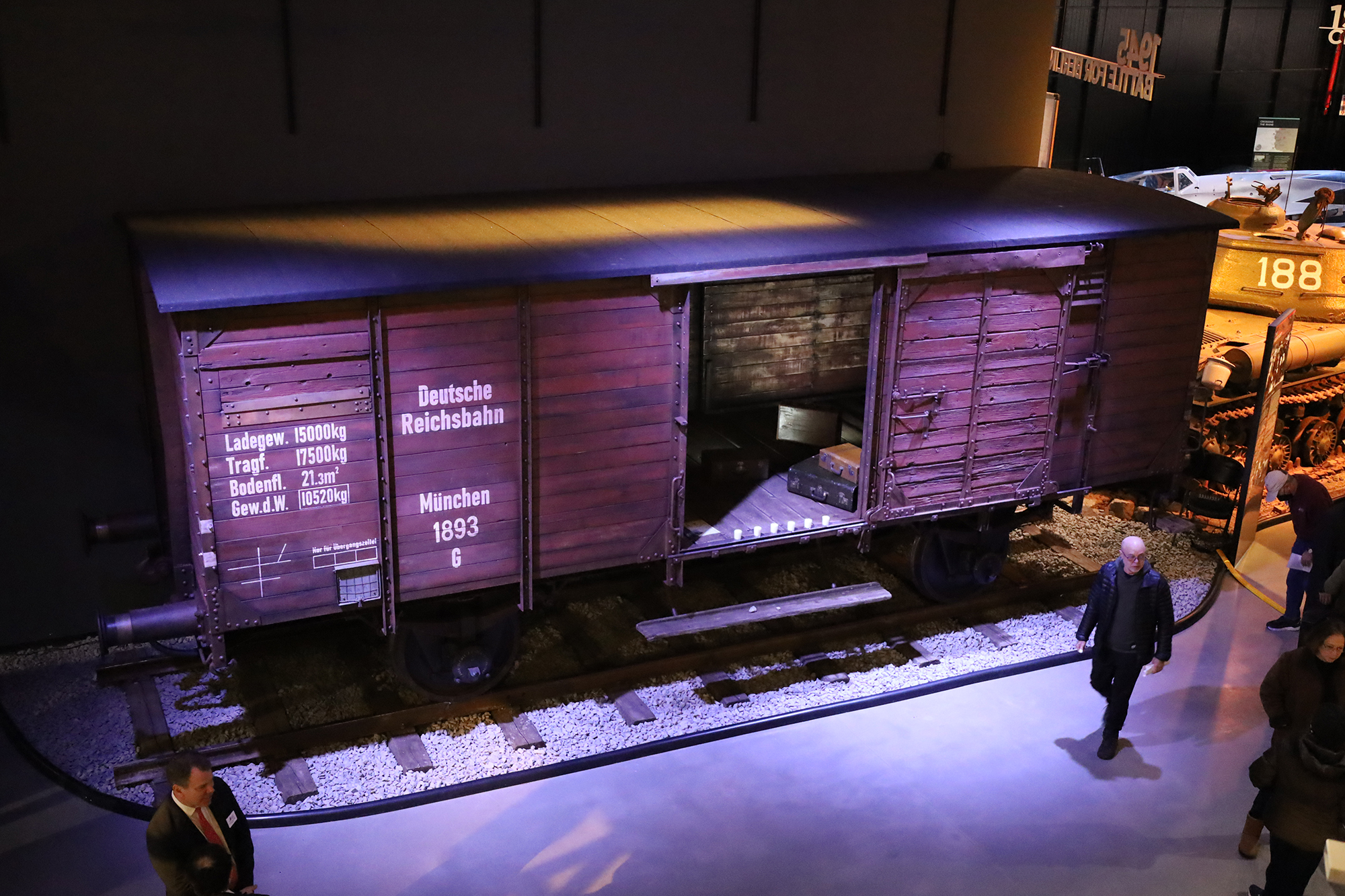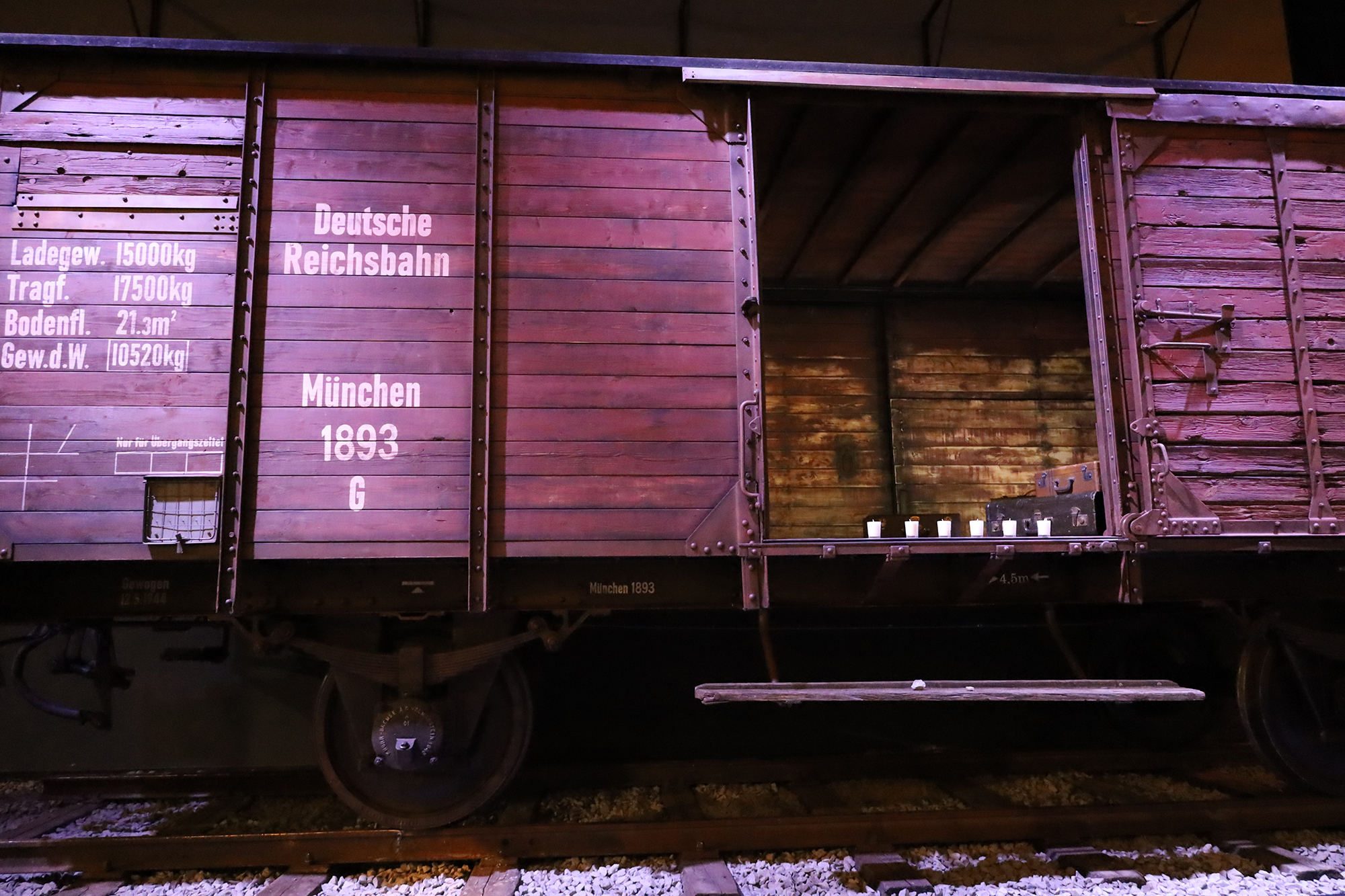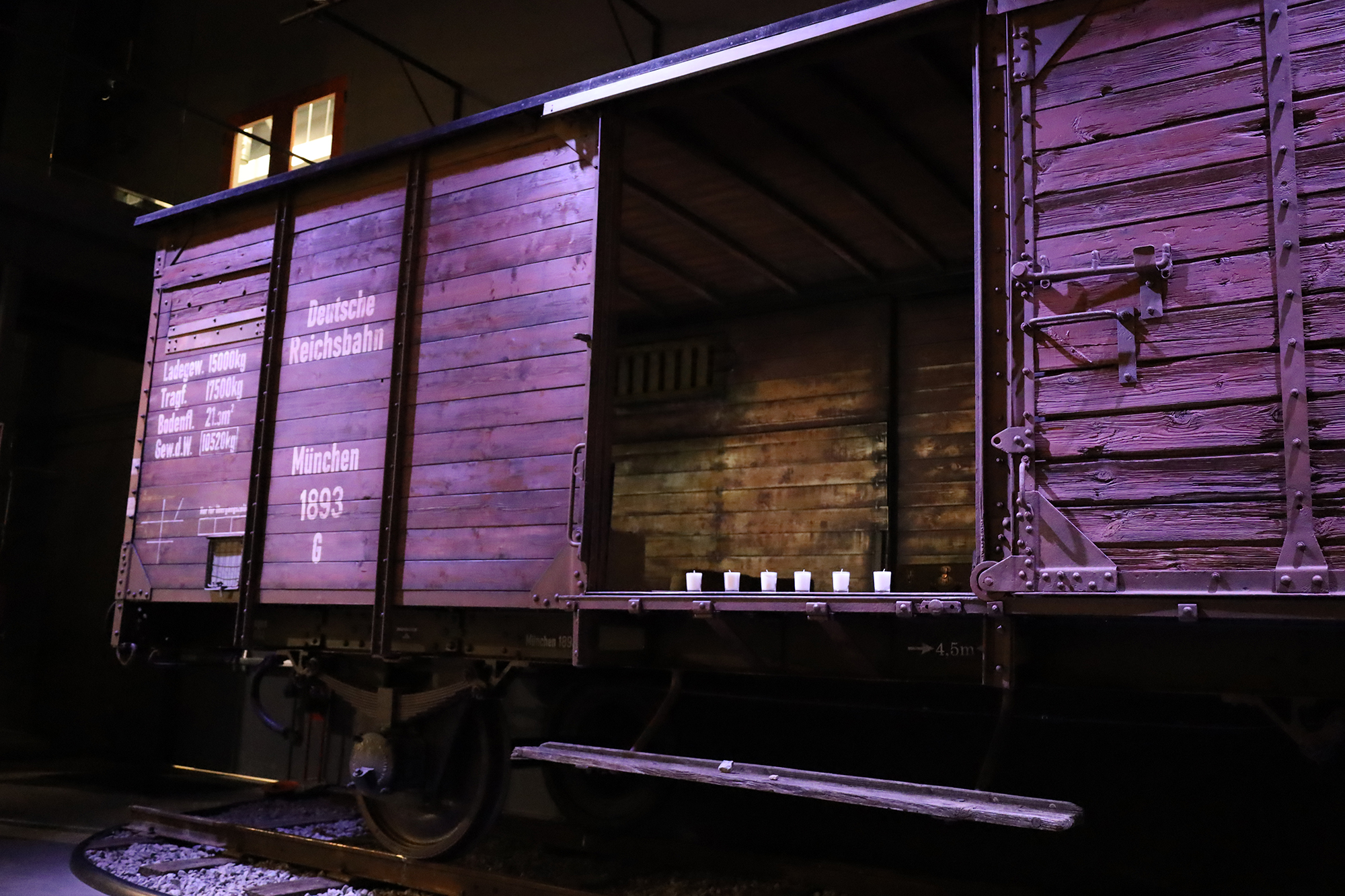
HUDSON – There was a celebratory but solemn mood inside the American Heritage Museum on Jan. 19.
On the morning before the anniversary of the Wannsee Conference – the 1942 Nazi meeting that led to the “Final Solution to the Jewish Question” and the framework for subsequent widespread genocide – crowds gathered to remember the Holocaust and commemorate the museum’s latest addition: an original World War II-era Deutsche Reichsbahn freight railcar.
The restoration and induction of the railcar is the first part of the museum’s two-phase project to “develop a comprehensive exhibit on the Holocaust from its evil origins, through years of horror and tragedy, and its lasting repercussions on the world in the decades since.”
“We are morally obligated to remember the past,” said American Heritage President Rob Collings.
“To ensure the memory of those lost, those who suffered, we enshrine this inanimate object, which is a witness to all the longstanding suffering,” he added.
The railcar – one of 120,000 similar “Type G-10” cars built between 1910 and 1927 – was imported from Nuremberg, Germany, over the summer. Over the last six months, volunteers worked to restore the 30-foot-long, two-axle railcar. While the museum could not confirm the imported railcar was used in the Holocaust, G-10 cars were the main method the Nazis used to transport people to concentration camps throughout Europe.
The museum stated that “the sheer number of victims transported during the Holocaust points to the likelihood that every car would have been used at some point.”
The ceremony started with the lighting of memorial candles. Temple Emanuel of Marlborough Cantor Wendy Siegel lit six candles, meant to represent the over 6 million Jewish victims of the Holocaust. Cantor Vera Broekhuysen, of the Congregation Beth El of Sudbury, performed “Ani Ma’amin.”
Meron Reuben, the Consulate General of Israel to New England, spoke to the crowd of hundreds.
“The educational aspect of impressing – especially [to] the younger generation – the knowledge of what actually happened [is important]. As we get further and further from the World War, as there are less and less first-hand survivors… it is imperative that we have this ability to understand what happened and the history of the second World War,” Reuben said.
Director of Salem State University’s Center for Holocaust and Genocide Studies Christopher Mauriello, Ph.D. said that he sees the railcar as an important symbol.
With myriad military vehicles perched around the railcar, Mauriello said the American Heritage Museum effectively represents the atrocities of the Holocaust and the “wars of annihilation” that contextualize it.
“When I turn around and look at the railcar here, I realize its symbolic value… For me, the railcar is a symbol of the alienation and destruction of humanity,” Mauriello said.
The complete exhibit — which will include a “comprehensive multimedia exhibit” — will be unveiled on January 27, 2025, exactly 80 years after the Auschwitz-Birkenau Concentration Camp was liberated.
For more information on the American Heritage Museum, please visit https://www.americanheritagemuseum.org/.















